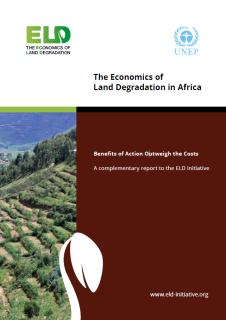
Land degradation and desertification are among of the world’s greatest environmental challenges. It is estimated that desertification affects about 33 % of the global land surface, and that over the past 40 years erosion has removed nearly one-third of the world’s arable land from production. Africa is particularly vulnerable to land degradation and desertification, and it is the most severely affected region. Desertification affects around 45 % of Africa’s land area, with 55 % of this area at high or very high risk of further degradation.
The report reviews the regional level data on the economic costs of soil erosion related to land degradation. It also analyses the limitations and challenges of using such data and the discrepancies emerging from various methodologies. It also delves into the methodological approach utilised for regional level estimates and the cost-benefit analysis of taking action against soil-erosion-induced nutrient losses on arable lands used for cereal production, which is one aspect of land degradation. This is done by using an econometric modelling approach that estimates the costs of inaction, costs of action and the net benefits of action against erosion-induced soil nutrient depletion using national level economic and biophysical data. It focuses on the regional estimates for Africa and a cost-benefit analysis of soil nutrient inflows versus soil nutrient outflows, or what is considered the overall soil nutrient balance.
